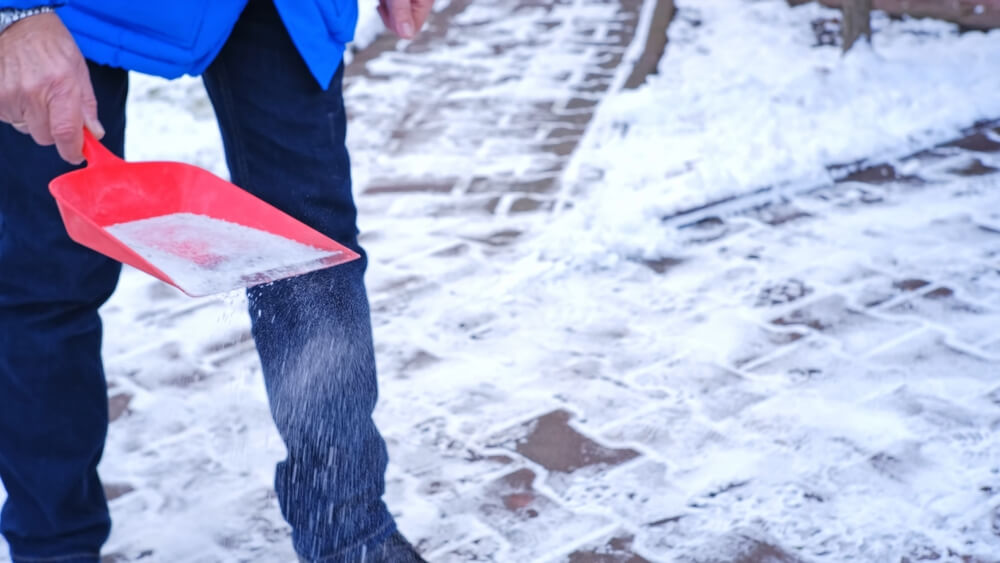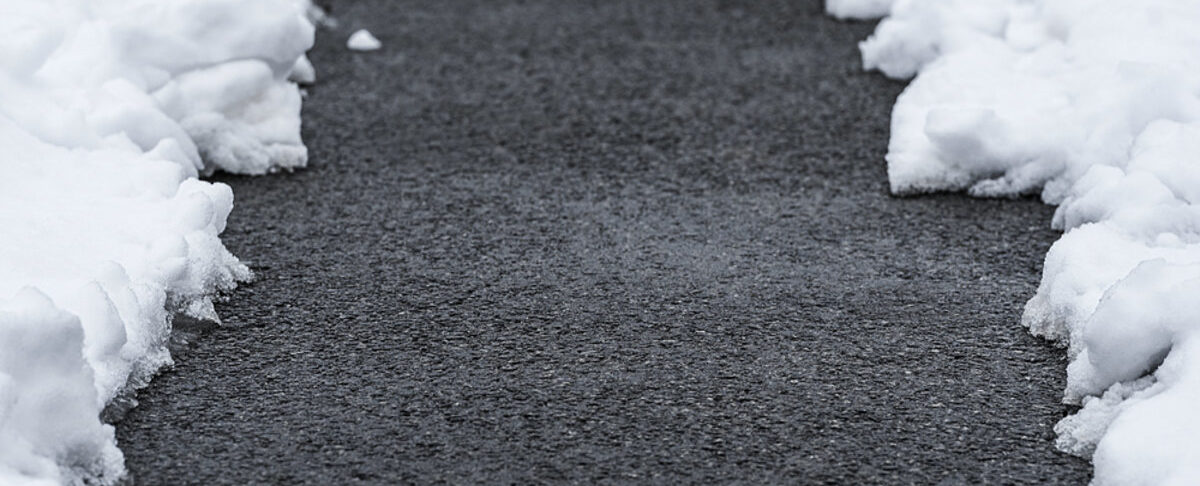In the dead of winter, few things are more frustrating than waking up to find your concrete driveway or parking lot covered in a thick layer of ice. Not only does it pose a safety hazard for vehicles and pedestrians, but if left unchecked, ice can cause long-term damage to your concrete surfaces. Knowing how to properly remove ice from concrete driveways and parking lots can save you time, money, and help keep your family and visitors safe.
Understanding the Problem: Ice on Concrete
Ice can be a persistent and hazardous problem in cold climates. When temperatures drop, moisture on your driveway or parking lot freezes, creating a slick surface that is dangerous to walk or drive on. If you don’t address this quickly, the repeated freeze-thaw cycles can even lead to cracks and deterioration of the concrete. This is why it’s important to know how to safely and effectively remove ice from concrete driveways and parking lots.
Concrete, while durable, is porous, meaning that water can seep into it. When that water freezes, it expands, leading to cracks or spalling (surface peeling) over time. To prevent such damage, choosing the right methods and products for ice removal is essential.
Best Methods to Remove Ice from Concrete Driveways
There are several methods to remove ice from concrete driveways, each with its pros and cons. Some approaches are fast-acting, while others focus on preventing long-term damage to the concrete surface. Let’s look at some of the best options available.
1. Use De-Icing Chemicals Safely
De-icing chemicals are one of the most popular ways to remove ice. However, not all chemicals are safe for concrete surfaces. Products containing sodium chloride (rock salt) can be highly effective, but they can also be corrosive to concrete. Over time, rock salt can cause significant damage, leading to cracks and pits. It’s best to use calcium chloride or magnesium chloride, which are less corrosive and safer for concrete.
How to Use De-Icing Chemicals:
- Choose calcium chloride or magnesium chloride for safer ice removal.
- Apply the product evenly across the driveway or parking lot before ice forms, if possible.
- If ice has already formed, sprinkle the product over the ice and wait for it to start melting.
- Use a shovel or snowblower to remove the melted ice and snow to prevent refreezing.
2. Sand for Traction and Safety
If you’re concerned about the potential damage that de-icing chemicals might cause, sand can be a great alternative. While sand doesn’t actually melt the ice, it provides traction, reducing the risk of slipping on slick surfaces. This is particularly useful if you have a lot of foot traffic on your driveway or parking lot.
How to Use Sand:
- Spread a thin layer of sand over the icy areas.
- Focus on spots with the most traffic, like walkways and parking spaces. Be prepared to reapply after snow or rain, as sand can be washed away.
Sand is a simple and affordable solution, but it’s a temporary fix that doesn’t eliminate the ice itself. However, combining sand with de-icing chemicals can provide both traction and ice melting.
3. Shovel or Snow Blower for Physical Removal
Physical removal is an immediate and effective solution when the ice isn’t too thick. A sturdy shovel or a snowblower can help clear light layers of ice or snow from your concrete driveway. Be cautious when using metal-edged tools, as they can scratch or chip the concrete surface.
How to Safely Shovel Ice:
- Use a plastic-edged shovel to minimize the risk of damaging the concrete.
- If the ice is thick, first use de-icing chemicals to weaken it.
- Be mindful of your posture and technique to avoid injury, especially if the ice is heavy or wet.
Long-Term Prevention Strategies for Ice on Concrete Driveways
Now that we’ve covered how to remove ice from concrete driveways and parking lots, let’s look at how to prevent ice from forming in the first place. Prevention can save you from the hassle of constant ice removal and protect your concrete from long-term damage.
1. Seal Your Concrete
Concrete sealants help create a protective barrier that reduces water absorption. This is especially useful during winter months when moisture seeping into concrete can freeze and expand, leading to damage. A quality concrete sealant can significantly reduce the amount of ice formation on your driveway or parking lot.
How to Apply Concrete Sealant:
- Clean your driveway or parking lot thoroughly before applying the sealant.
- Apply the sealant using a roller or sprayer, following the manufacturer’s instructions.
- Reapply the sealant every 2–3 years for the best results.
2. Install Snow-Melting Mats
Snow-melting mats are electric heating mats that can be installed on driveways and walkways. They prevent ice and snow buildup by heating the surface, making them a long-term solution to icy surfaces. Though this can be a more expensive option, it eliminates the need for chemical de-icers or physical labor.
Key Benefits:
- No need for shoveling or chemicals.
- Reduces the risk of cracks or other damage from ice.
Conclusion

Knowing how to remove ice from concrete driveways and parking lots is not just about convenience—it’s about safety and protecting your property from costly damage. Whether you choose to use de-icing chemicals, sand, or physical removal methods, being proactive will keep your surfaces safe and prolong the life of your concrete. Remember, prevention is just as important as ice removal.
By sealing your driveway or installing snow-melting mats, you can reduce the risk of ice formation and keep your driveway and parking lots clear all winter long. For expert advice or assistance with your concrete needs, contact Richfield Concrete today to ensure your surfaces are properly maintained and prepared for winter.




